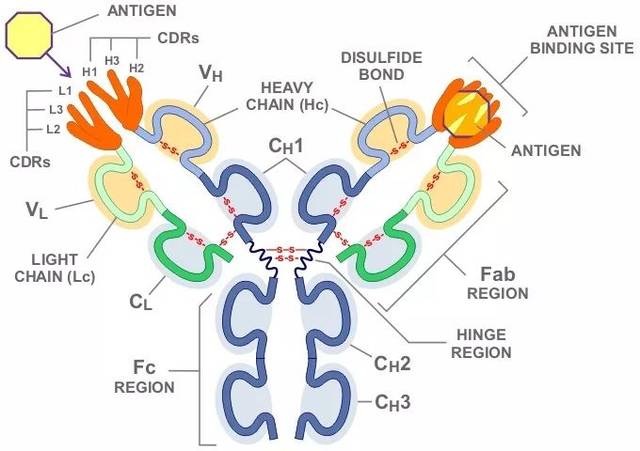Product Name :
Dabie bandavirus Nucleocapsid Protein polyclonal antibody Background :
SFTSV is a segmented, negative-sense RNA virus (sNSV), which includes viruses from the Bunyavirales and Articulavirales orders. This virus is a member of the newly identified Banyangvirus genus in the Phenuiviridae family of the Bunyavirales order according to the Virus Taxonomy 2019, which is released by the International Committee on Taxonomy of Viruses (ICTV). SFTSVs form spherical virions of approximately 80–100 nm in diameter with viral glycoprotein (Gn and Gc) at the membrane that facilitates entry. Inside the virion, the RNA genome is composed into three segments (S, small; M, medium; and L, large) that are encompassed by nucleoprotein and bound to L polymerase. These segments encode for nucleoprotein (N) and nonstructural protein (NSs), glycoprotein (Gn and Gc), and the RNA-dependent RNA polymerase (RdRp or L), respectively.Ticks are the potential vector responsible for the spread of SFTSV to humans. Product :
Rabbit IgG, 1mg/ml in PBS with 0.02% sodium azide, 50% glycerol, pH7.2. Storage&Stability :
Store at 4°C short term. Aliquot and store at -20°C long term. Avoid freeze-thaw cycles. Specificity :
Dabie bandavirus Nucleocapsid Protein polyclonal antibody detects endogenous levels of SFTSV/HB29 protein. Immunogen :
Recombinant protein of SFTSV/HB29. Conjugate :
Unconjugated Modification :
Unmodification
Dabie bandavirus Nucleocapsid Protein polyclonal antibody Background :
SFTSV is a segmented, negative-sense RNA virus (sNSV), which includes viruses from the Bunyavirales and Articulavirales orders. This virus is a member of the newly identified Banyangvirus genus in the Phenuiviridae family of the Bunyavirales order according to the Virus Taxonomy 2019, which is released by the International Committee on Taxonomy of Viruses (ICTV). SFTSVs form spherical virions of approximately 80–100 nm in diameter with viral glycoprotein (Gn and Gc) at the membrane that facilitates entry. Inside the virion, the RNA genome is composed into three segments (S, small; M, medium; and L, large) that are encompassed by nucleoprotein and bound to L polymerase. These segments encode for nucleoprotein (N) and nonstructural protein (NSs), glycoprotein (Gn and Gc), and the RNA-dependent RNA polymerase (RdRp or L), respectively.Ticks are the potential vector responsible for the spread of SFTSV to humans. Product :
Rabbit IgG, 1mg/ml in PBS with 0.02% sodium azide, 50% glycerol, pH7.2. Storage&Stability :
Store at 4°C short term. Aliquot and store at -20°C long term. Avoid freeze-thaw cycles. Specificity :
Dabie bandavirus Nucleocapsid Protein polyclonal antibody detects endogenous levels of SFTSV/HB29 protein. Immunogen :
Recombinant protein of SFTSV/HB29. Conjugate :
Unconjugated Modification :
Unmodification
Bioworld Biotech only provide peptides for our antibodies and do not provide additional peptide customization services.
Price/Size :
USD 368/1mg/vial
Tips:
For phospho antibody, we provide phospho peptide(0.5mg) and non-phospho peptide(0.5mg).Describe :
Blocking peptides are peptides that bind specifically to the target antibody and block antibody binding. These peptide usually contains the epitope recognized by the antibody. Antibodies bound to the blocking peptide no longer bind to the epitope on the target protein. This mechanism is useful when non-specific binding is an issue, for example, in Western blotting (WB) and Immunohistochemistry (IHC). By comparing the staining from the blocked antibody versus the antibody alone, one can see which staining is specific; Specific binding will be absent from the western blot or IHC performed with the neutralized antibody.Formula:
Synthetic peptide was lyophilized with 100% acetonitrile and is supplied as a powder. Reconstitute with 0.1 ml DI water for a final concentration of 10 mg/ml.The purity is >90%,tested by HPLC and MS.
Storage:
The freeze-dried powder is more stable. For short time at 2-8°C. For long term storage store at -20°C.
Note :
This product is for research use only (RUO only). Not for use in diagnostic or therapeutic procedures.
 Dabie bandavirus Nucleocapsid Protein polyclonal antibody
Dabie bandavirus Nucleocapsid Protein polyclonal antibody 
 Datasheet
Datasheet COA
COA MSDS
MSDS SHIP
SHIP